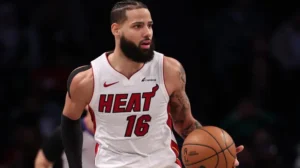
Credit Roger Penske and the Penske Entertainment organization with the size and stability that underpins the large IndyCar grid. After weathering the financial devastation of COVID, Penske’s series emerged from the epidemic with 25 full-time entries in 2022, increased to 27 in 2023, and has remained at 27 this year, setting a modern record for consecutive seasons.
On its current pace, the number might reach 29 or more by 2025, which is both a blessing and a curse for a series looking for ways to regulate its growth.
The relatively low cost of fielding an entry in comparison to other top-tier racing series, which is changing and increasing with the mid-season introduction of hybrid powerplants, has piqued the curiosity of entrants seeking to compete in a major North American championship.
With an average operating budget of $6-8 million per season through 2023, an IndyCar entry has cost a fraction of what it costs to race in NASCAR’s Cup Series, and with no hope for international teams to gain entry into Formula 1, IndyCar has benefited from having a comparatively low entry fee to compete in its series for drivers and teams who have given up hope of reaching F1.
Although the average budget has risen to $8-10 million per car by 2024, this has not resulted in a decrease in entries or suppressed enthusiasm among individuals looking to pay to drive or form a new team to field.
Building on the 27 existing cars managed by its ten long-tenured teams, the series is poised for another surge in 2025, as three other teams, including two newcomers, are actively seeking to join IndyCar full-time.
The first of these is the Abel Motorsports Indy NXT program, which made a one-time IndyCar participation at the Indianapolis 500 in May using a chassis owned by its driver RC Enerson. The team, founded by Kentucky construction magnate Bill Abel, has purchased its own Dallara DW12 as well as the pit equipment required to run a car at each race. In 2023 and again this May, Abel’s No. 50 entry will be powered by Chevrolet’s 2.2-liter twin-turbo V6 engine. It’s uncertain if using Chevy engines beyond Indy is an option.
The Pratt & Miller Motorsports team, which supports Chevrolet’s factory IMSA GTD Pro program, is making its first step into IndyCar but has yet to purchase a car or secure an engine lease. The multi-discipline PREMA Racing team from Italy is also on the cutting edge of IndyCar’s prospective growth.
Looking at IndyCar’s two engine manufacturers and their efforts to share the burden of supplying the season-long field, Chevy has 12 motor leases in play this year and Honda has 15, pointing to Team Chevy as the brand with the best chance of supporting any new teams next year. To reach 29 or 30 cars, Chevy would need to get closer to Honda’s lease number.
To that end, multiple sources tell RACER that Prema, which has a strong European junior open-wheel and sports car operation and has expanded into the United States through its Iron Lynx Lamborghini IMSA GTP program, has secured a pair of engine leases from Chevrolet and is expected to announce a two-car IndyCar effort in the coming weeks.
Prema is said to be planning to launch its American open-wheel initiative in 2025 from its Michigan-based shop, with a focus on hiring an IndyCar veteran to lead the team and mentor a second driver who has progressed through Prema’s championship-winning European ladder, which reaches as far as Formula 2. Prema is also believed to have spoken with many IndyCar teams to discuss the idea of forging a technical partnership. A call to Prema to discuss the issues at hand was not returned before publication.
Although Team Chevy declined to comment on the issue of backing an extended IndyCar grid, Honda Racing Corporation US VP Kelvin Fu was eager to discuss it.
“I think it’s good that there’s so much interest in the paddock,” Fu was quoted as saying by RACER. “I understand it’s something IndyCar has been working on for a long time. But I believe we’ve done everything we can. We’ve tried whenever someone has asked, and we’re at 15 full-time and 18 [leases] for the Indy 500, which is quite a number. I believe this is as far as we can go.
“A lot of it is supply costs—resources, getting people here, and funding the series. I’m not sure whether there’s anything extra we could achieve beyond what we’ve already accomplished.”
For its part, the series embraces the prospect of expanding its field, but there are certain issues to consider if the grid expands beyond 27 vehicles. At some IndyCar venues, pit lane capacity is limited to 27 entrants, and appropriate paddock space to accommodate extra haulers is not assured at all circuits. Figuring out how to embrace the new-team intrigue has been a constant focus for the series.
“That’s a complicated topic,” IndyCar President Jay Frye told RACER. “When we created the five-year plan in 2017, one of our objectives was to bring in new owners and teams. In that aspect, the plan has undoubtedly proven successful. And it’s not just new teams or number, but the quality of the teams and entities that want to race with us, which is fantastic.
“So, how will we handle this moving forward? Part of it is self-policing due to the constraints imposed by engine manufacturers. Obviously, Honda and Chevrolet do an excellent job, but they are quickly approaching capacity in terms of the number of teams they can support.
RACER believes that the series has been proactive in scheduling meetings and calls with a variety of prospective entrants and will continue to do so until answers are found.
“That’s an ongoing conversation,” Frye noted. “And how do these new entities go about getting in? Do they purchase existing entities? It’s a great problem to have, and we’re actively working to address it.







